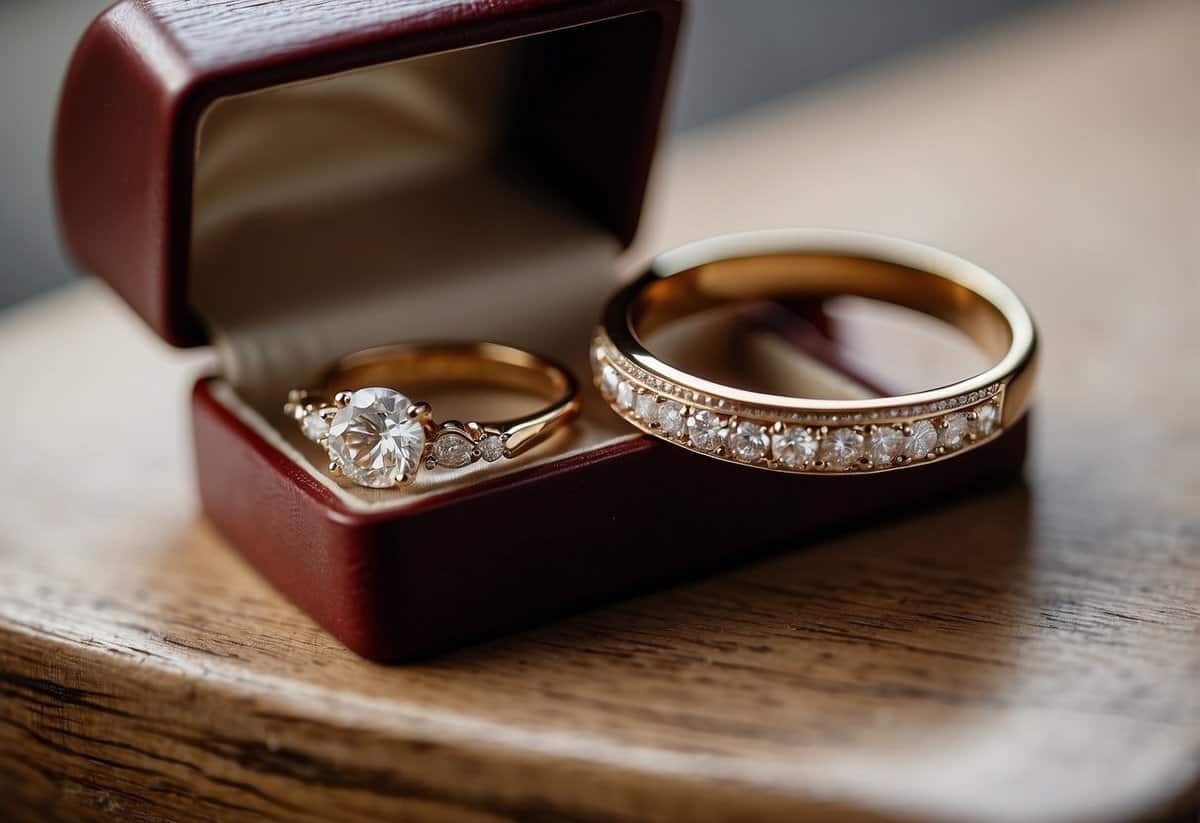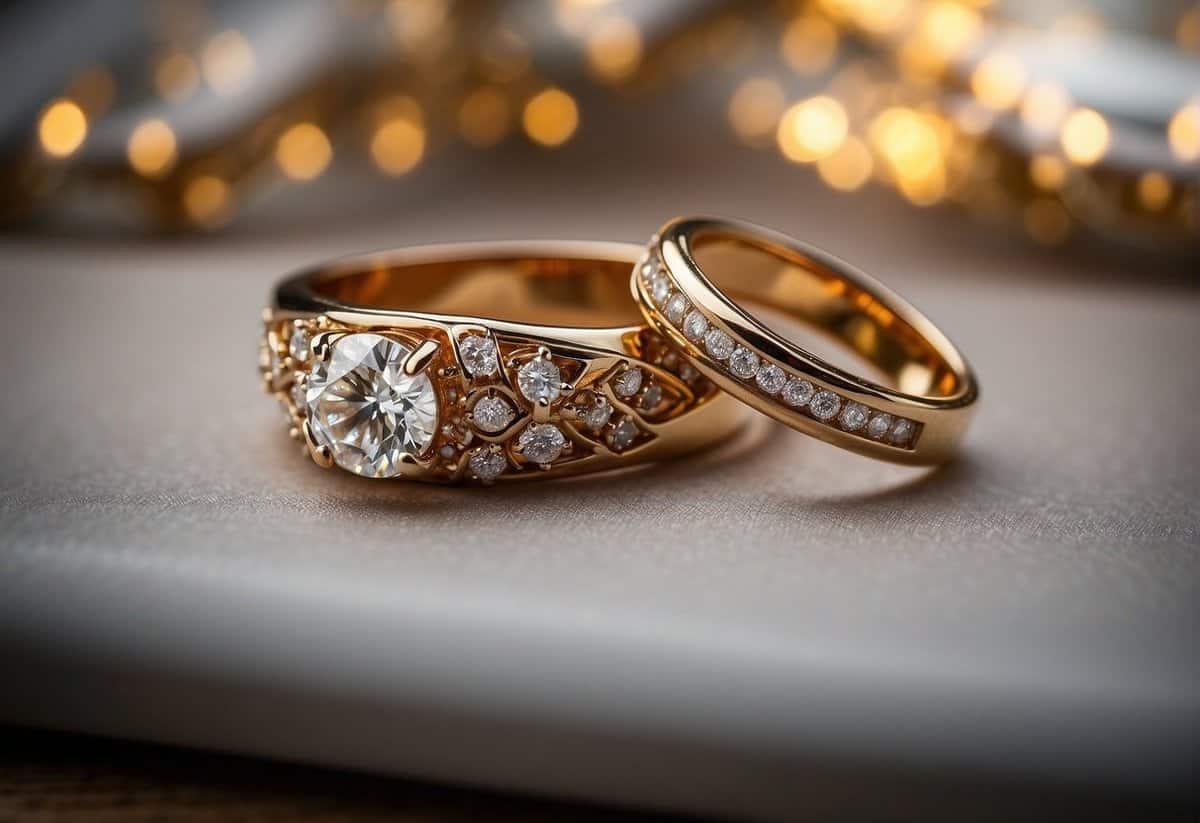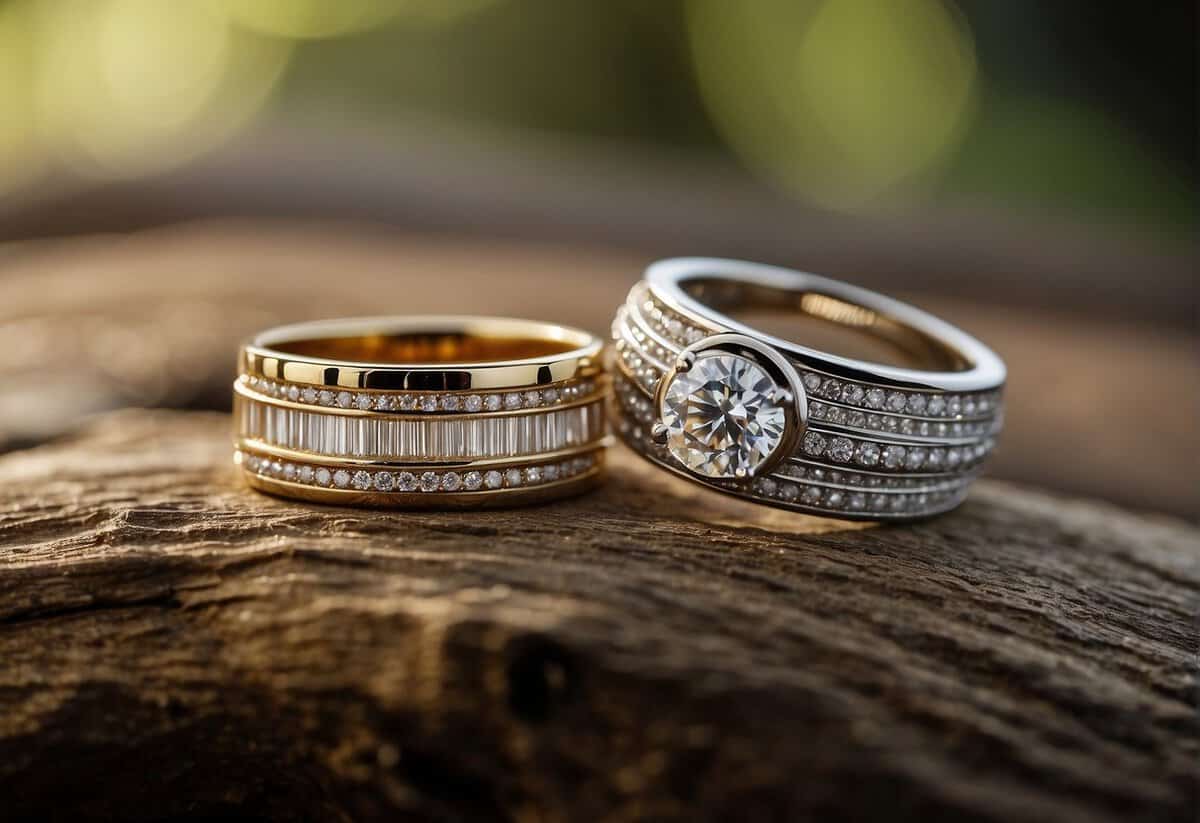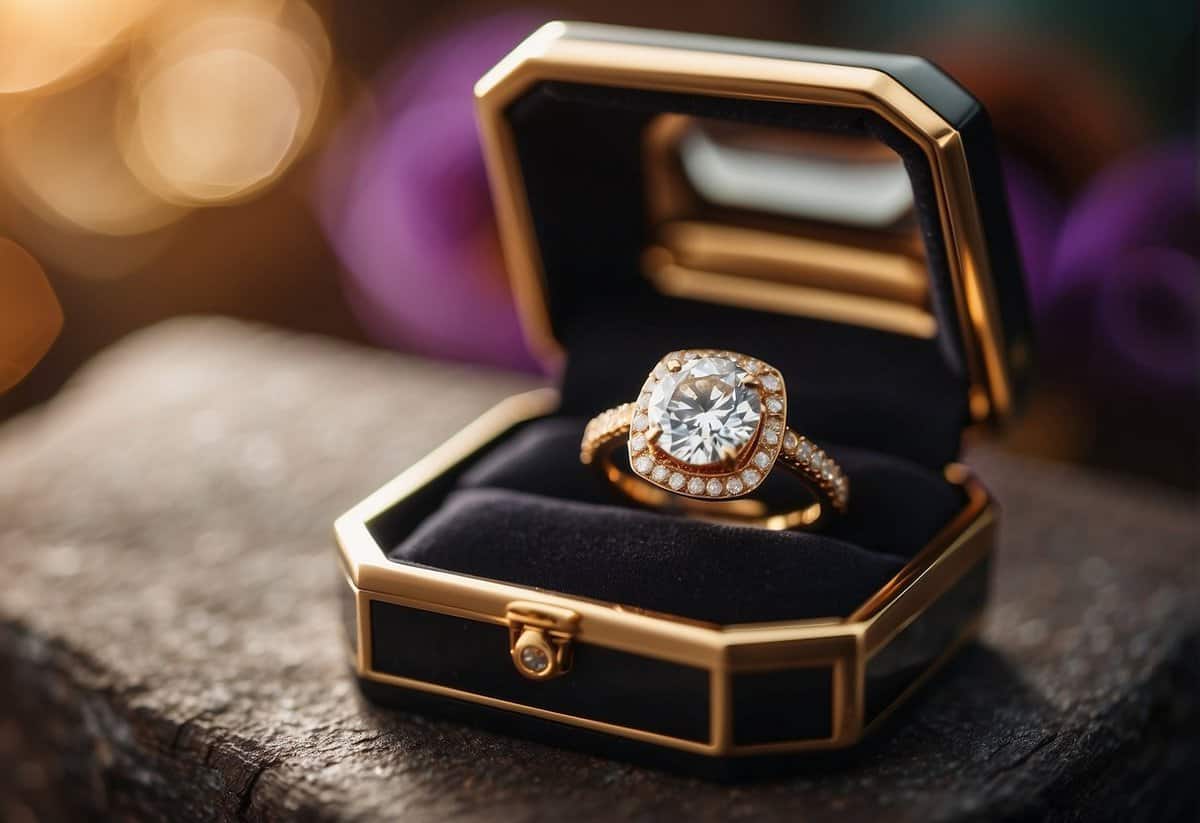Do You Still Wear Your Engagement Ring After You Get Married? Understanding Post-Wedding Jewelry Etiquette
Deciding whether to continue wearing your engagement ring after the wedding is a choice that varies among different individuals and cultures. It’s a symbol of love and commitment that has adorned your finger since the proposal, sparking the question of its role post-marriage. As you transition from fiancé to spouse, your wedding ring becomes the new symbol of your married status, but this doesn’t mean the engagement ring loses its significance. Many choose to wear both rings together, often pairing them on the same finger, while others may opt to wear their engagement ring only on special occasions, reflecting their personal style and the practicality of daily activities.

Traditionally, during the wedding ceremony, the engagement ring is either temporarily removed or shifted to the right hand to allow the wedding band to take its place on the left hand, signifying the seal of marriage. Following the ceremony, the engagement ring is usually placed back on the finger, on top of the wedding band. However, how you incorporate your engagement ring into your daily life after the big day is entirely up to you, whether you’re stacking it with your wedding band, wearing it on a different finger, or even having it combined with your band.
Key Takeaways
- Continuation of wearing your engagement ring post-wedding is a personal preference.
- The wedding band traditionally takes prominence on the left hand during the ceremony.
- Engagement rings can be worn in various ways alongside the wedding band after marriage.
Understanding Engagement and Wedding Jewelry

When you’re navigating the journey from engagement to marriage, it’s essential to understand the significance of your jewelry and the choices you make about wearing it.
The Symbolism of Rings
Rings have long been a symbol of love and commitment. Your engagement ring often features diamonds or gemstones and is a sign of promise, while the wedding band signifies the actual bond of marriage. It’s traditional to wear both on the ring finger of your left hand, indicating that you’re in a committed married relationship.
Choosing the Right Material
The material of your rings is not only a matter of preference but also practicality. Popular choices for both engagement rings and wedding bands include gold, platinum, and silver. These materials offer durability and a timeless look. Whatever you choose, ensure it’s a material that will last a lifetime, much like your commitment to each other.
Engagement Ring and Wedding Band Differences
Understanding the difference between an engagement ring and a wedding ring is key. An engagement ring is typically more elaborate, often set with one or more precious stones. A wedding ring or band tends to be more understated for everyday wear. Following your wedding ceremony, you may place your engagement ring on top of your wedding band, symbolizing the journey from engagement to marriage.
Cultural and Personal Traditions

When it comes to wearing your engagement ring post-wedding, your decision may be influenced by a myriad of cultural norms and personal choices. It’s a unique mix of time-honored traditions and the personal significance you place on your rings.
Traditions Across Cultures
Culturally, wedding bands and engagement rings carry deep symbolism representing commitment and love. In many Western cultures, during the wedding ceremony, your engagement ring is often placed on the right hand to allow the wedding band to take the prime spot nearest your heart on the left hand. After the ceremony, it’s common to stack the engagement ring atop the wedding band. However, traditions can vary widely. For example, in some European cultures, the wedding band is worn on the right hand.
In several Eastern cultures, the use of engagement rings is less common, and the focus is often more on intricate wedding bands exchanged during the ceremony. Moreover, in certain cultures, jewelry given by family members signifies not just commitment but also familial blessings and connections.
Individual Preferences and Choices
Your personal preference plays a crucial role in deciding how to wear your rings post-marriage. Some people choose to wear their engagement ring on their left hand with the wedding band for daily wear, while others may wear it on special occasions as a stand-alone piece. There are also practical considerations—depending on your profession or lifestyle, wearing both might not be feasible.
You have the freedom to create a new tradition that is personally significant for you. Your rings are symbols of your love and commitment, and how you choose to wear them should reflect what feels right for you and your partner, regardless of the prevailing culture or conventions.
Wearing and Caring for Your Rings

Your journey with an engagement ring evolves as you transition into marriage, and understanding how to wear and care for your rings can enhance their longevity and brilliance. This section will highlight the practices for daily wear, protecting them from potential harm, and keeping them in top condition.
Day-to-Day Comfort and Style
Comfort is key when it comes to daily wear of your engagement and wedding rings. Wearing both rings together is a beautiful symbol of your journey from engagement to marriage, and they should be as comfortable as they are meaningful. Consider your lifestyle when choosing how to wear your rings. Simple activities like typing or cooking might not affect your rings, but if your day includes more hands-on tasks or outdoor activities, you might want to adjust how often you wear your rings for comfort and safety.
Protecting Your Rings from Damage
Your rings are a testament to your love, but they aren’t impervious to the world around you. To steer clear of potential damage:
- Remove your rings before engaging in activities like swimming, gardening, or any sports.
- Avoid exposing your rings to harsh chemicals such as chlorine or cleaning agents, which could tarnish or even erode the metals.
- When you must take your rings off, store them in a safe, soft-lined compartment to prevent scratches.
Consider the potential risks during these activities on your wedding day as well, maybe opting for a temporary stand-in to avoid any mishaps.
Cleaning and Maintenance Advice
Keep your rings looking their best with regular cleaning and maintenance. Here’s a simple routine to follow:
- Biannual check-ups with a professional jeweler can catch any loose stones or wear.
- At home, soak your rings in a solution of warm water and mild dish soap, then use a soft brush to gently clean.
- For a quick shine, buff your rings with a soft, lint-free cloth. This upkeep ensures that your cherished symbols of love remain as resplendent as your memories.
The Life Journey of Your Rings

As you walk through life’s milestones, your engagement and wedding rings often evolve with you, symbolizing commitment, sentimentality, and the ever-changing nature of love.
Repurposing or Upgrading Your Jewelry
Perhaps your life circumstances have shifted, and you’re considering a new purpose for your precious stones. You might transform your engagement ring by repurposing smaller stones into a necklace or pendant, keeping them close to your heart. Alternatively, upgrading your ring to include a larger center stone can signify growth and investment in your relationship.
Turning Rings into Heirlooms
Your rings aren’t just ornaments; they’re a promise of continuity. By turning your rings into heirlooms, you create a tangible connection to future generations. It might be as simple as passing your rings down or as specific as redesigning them to suit the taste of their new owner, imbuing them with sentimental value and the story of eternity.
The Emotional Significance of Rings Over Time
Over time, the emotional value of your rings often transcends their monetary worth. Each ring represents various stages of life and love. The transition from engagement to marriage, and potentially to an heirloom, can often reflect a communication of love and the losing and finding of cherished moments that are as precious as the rings themselves.
Frequently Asked Questions

In this section, we’ll answer some common questions you might have about how to wear your engagement ring after you tie the knot.
Is it customary to wear your engagement ring after the wedding ceremony?
Yes, it is the norm to continue wearing your engagement ring after the wedding. It is typically placed back on the finger, above the wedding band.
Can the engagement ring also serve as your wedding ring?
While the engagement ring and wedding ring are usually distinct, they can be one and the same if you choose. Some people opt for a single ring to serve both purposes, reflecting personal preference or convenience.
What do most people do with their engagement ring once married?
Most people wear their engagement ring along with their wedding band. The engagement ring is generally worn on top of the wedding band.
Are there particular traditions for wearing engagement rings post-wedding?
Yes, several traditions influence how engagement rings are worn after the wedding. For example, the order of the rings—wedding band first, then engagement ring—symbolizes the transition from engagement to marriage and is a common practice.
How do newlyweds typically incorporate their engagement rings into their daily wear?
Newlyweds often stack their engagement ring on the same finger as the wedding band. The engagement ring is usually worn above the wedding band, closest to the fingernail.
Should the engagement ring be worn on a different finger after marriage?
There are no strict rules for this—it boils down to personal choice. Some may choose to wear the engagement ring on a different finger for comfort or style, but traditionally it stays on the fourth finger of the left hand along with the wedding ring.


